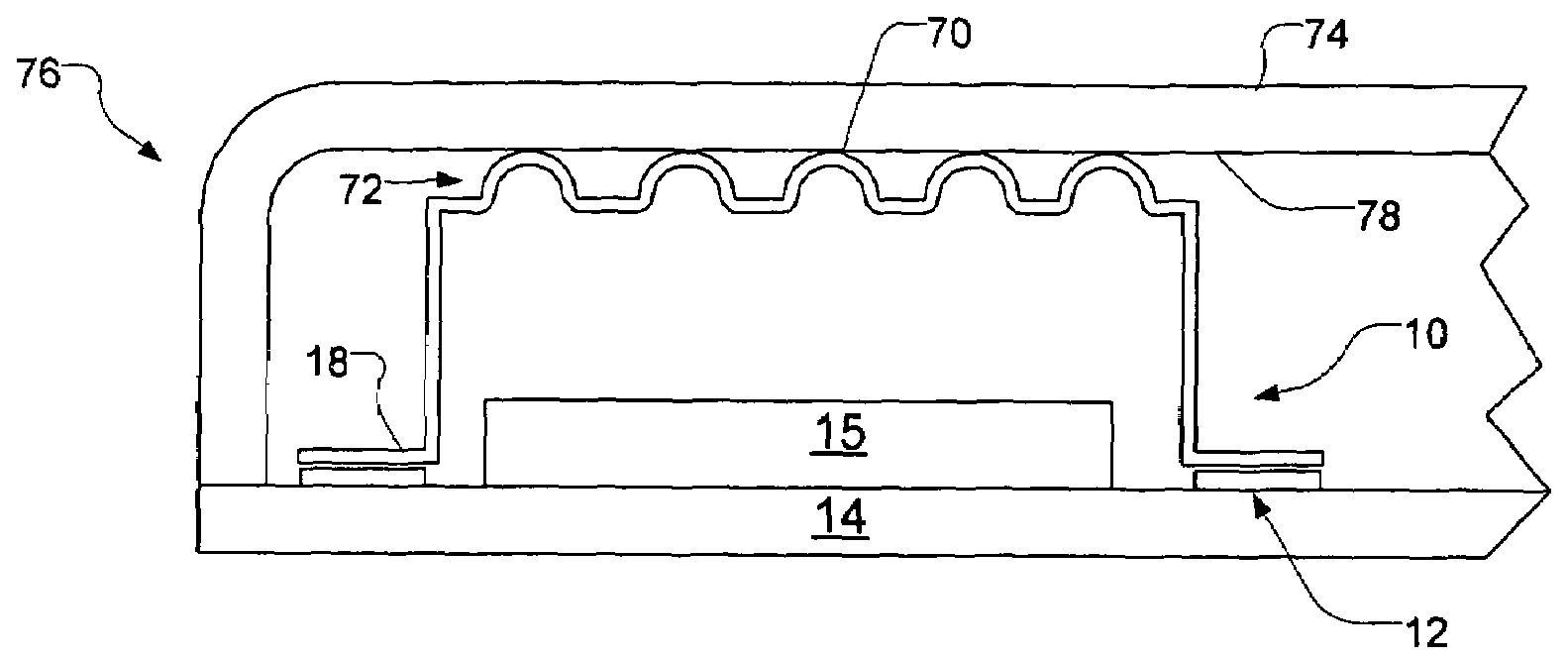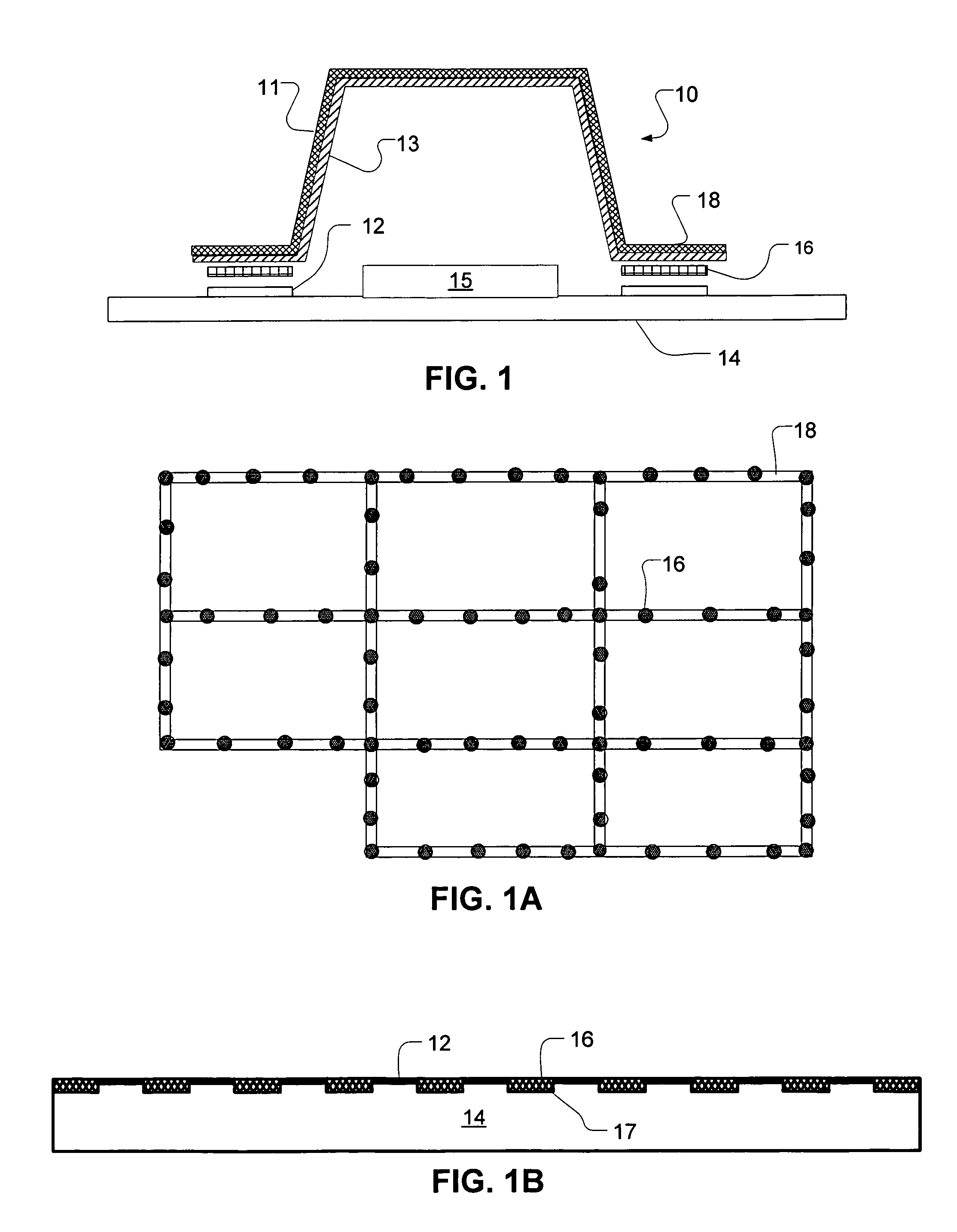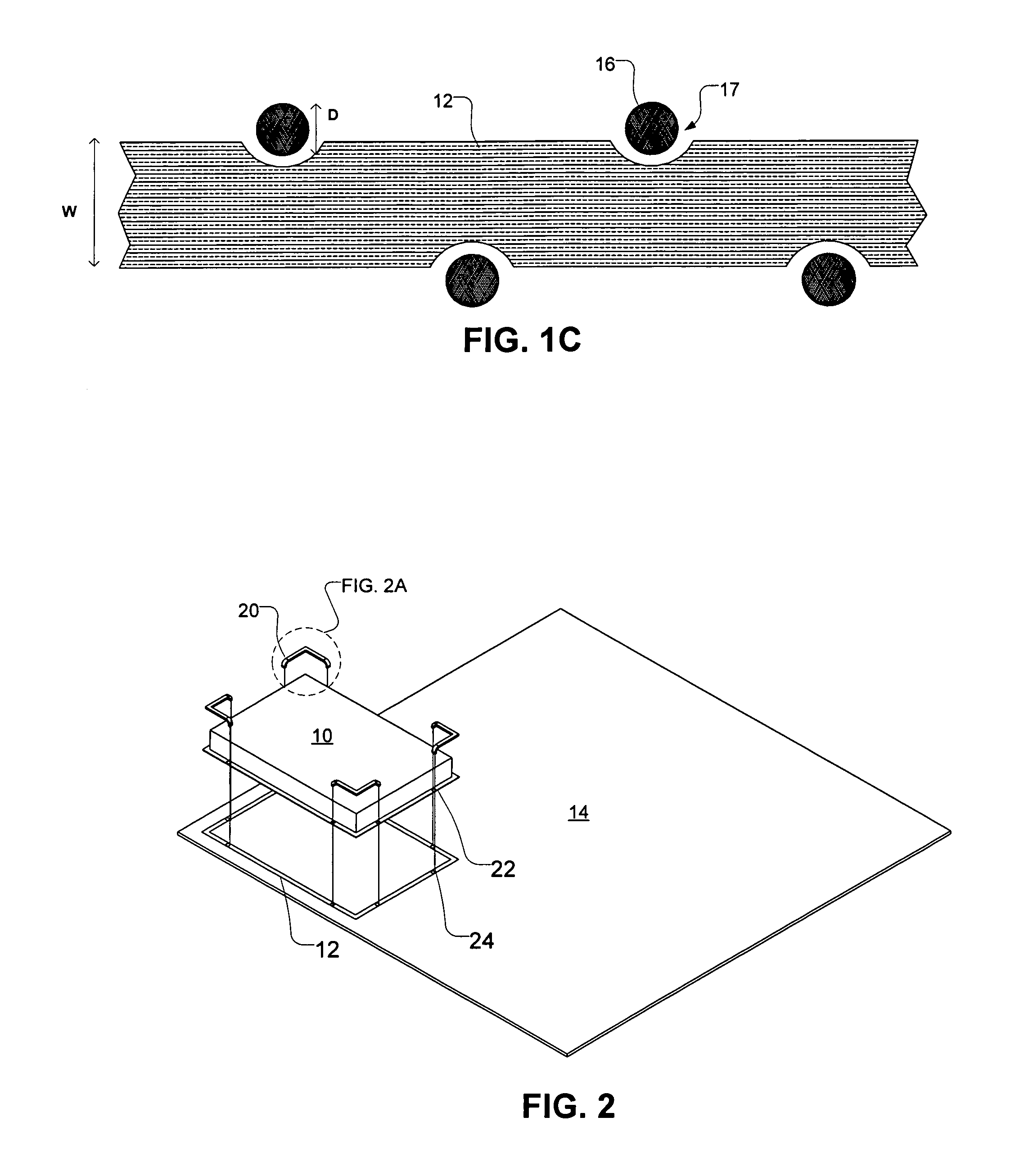Methods and devices for connecting and grounding an EMI shield to a printed circuit board
a technology of electromagnetic interference and printed circuit board, which is applied in the direction of electrical apparatus construction details, coupling device connections, localised screening, etc., can solve the problems of increasing the cost of electronic equipment, cellular phones, and existing solutions
- Summary
- Abstract
- Description
- Claims
- Application Information
AI Technical Summary
Benefits of technology
Problems solved by technology
Method used
Image
Examples
Embodiment Construction
[0054]The present invention provides methods and assemblies for connecting and grounding an electromagnetic interference (EMI) shield to a printed circuit board (PCB) of an electronic device.
[0055]The EMI shields of the present invention typically include a resin film layer that can be formed by a variety of plastic processing methods to a desired shape to partially or fully enclose a printed circuit board and the electronic components on the printed circuit board. In exemplary embodiments, the resin film layer is a thermoformable plastic that is shaped using thermoforming techniques (e.g., vacuum, pressure, or mechanical forces). It should be appreciated however, that the resin film layer can be shaped using any conventional or proprietary methods. The resin film layer of the EMI shield typically has at least one metal layer on at least one side of the resin film layer. The metal layers will have a thickness that is sufficient to block the transmission of EMI, typically between abo...
PUM
 Login to View More
Login to View More Abstract
Description
Claims
Application Information
 Login to View More
Login to View More - R&D
- Intellectual Property
- Life Sciences
- Materials
- Tech Scout
- Unparalleled Data Quality
- Higher Quality Content
- 60% Fewer Hallucinations
Browse by: Latest US Patents, China's latest patents, Technical Efficacy Thesaurus, Application Domain, Technology Topic, Popular Technical Reports.
© 2025 PatSnap. All rights reserved.Legal|Privacy policy|Modern Slavery Act Transparency Statement|Sitemap|About US| Contact US: help@patsnap.com



